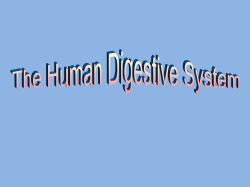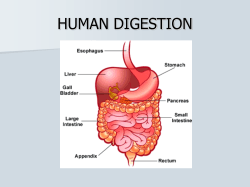
American College of Gastroenterology Common Gastrointestinal Problems A Consumer Health Guide
American College of Gastroenterology Digestive Disease Specialists Committed to Quality in Patient Care ○ ○ ○ ○ ○ ○ ○ ○ ○ ○ ○ ○ ○ ○ ○ ○ ○ ○ ○ ○ ○ ○ ○ ○ ○ ○ ○ ○ ○ ○ ○ ○ ○ ○ ○ ○ ○ ○ Common Gastrointestinal Problems A Consumer Health Guide Intestinal Gas Problems bacteria in the large intestine, causing the formation of gas. A high roughage diet is important to promote bowel regularity, but excessive roughage or fiber may lead to bloating and increased flatulence. When increasing the amount of fiber in your diet, do so gradually, allowing your intestinal tract time to adjust. Milk sugar (lactose) requires an intestinal enzyme (lactase) for digestion. When individuals lack this enzyme the lactose in milk and other dairy products enters the large intestine where the lactose is broken down by bacteria, producing gas. Although milk is an excellent source of protein and calcium, many adults experience abdominal bloating, gas and diarrhea after consuming milk sugar. Persons from Asia and Africa are often extremely intolerant to the smallest quantity of dairy products. Everyone passes some rectal gas, although the volume of gas is different each day. Much of the flatus comes from the nitrogen found in the air one swallows. The remainder of the flatus volume is the result of carbohydrates which are not absorbed in the small intestine and are broken down by bacteria in the large intestine. Therefore, the amount of flatus represents a combination of swallowed air and poorly absorbed carbohydrates. The unpleasant order of flatus is due to other gases, such as hydrogen sulfide, which is produced by the bacteria. ○ ○ ○ ○ ○ ○ ○ ○ ○ ○ ○ ○ ○ ○ ○ Although the mention of intestinal gas problems, such as belching, flatulence, bloating and gas pains often elicits some degree of amusement, all of us have gas in our intestinal tract and must expel it in some way. Some individuals are very sensitive to the effects of gas collections in the stomach and intestinal tract and may develop significant discomfort. If such complaints are troublesome and persistent and do not respond to simple measures, such as change in diet, a visit to your doctor could be helpful. ○ ○ ○ ○ Where does the gas that we belch or burp come from? ○ ○ ○ ○ ○ ○ ○ ○ ○ ○ ○ ○ ○ ○ ○ ○ ○ ○ ○ The gas brought back by belching comes entirely from swallowed air. We all swallow some air when eating food and drinking liquids. Most of the gas mixes with the stomach content and either enters into the small intestine or is belched back. The air that enters the small intestine is either absorbed or it may continue through to the large intestine and is then passed rectally. Individuals may swallow more air (and thus increase stomach gas) if they have a post-nasal drip, chew gum, have poorly fitting dentures, suck on hard candies or smoke tobacco. Drinking carbonated beverages (soda or beer) or eating rapidly can also increase stomach gas. ○ What causes repetitive belching or burping? ○ ○ ○ ○ How can the volume of flatus be reduced? In addition to the gas-forming foods cited above, some diet chewing gum and hard candies use sorbitol or fructose as sweeteners. These sugars can lead to excess gas production and should be avoided. Elimination of dairy products or the use of lactase-added milk can be helpful for those with lactase deficiency. ○ ○ ○ ○ ○ ○ ○ ○ ○ ○ Some people have episodes of repeated belching. Since belched gas comes from swallowed air, these individuals are usually unaware that they caused the problem by swallowing air into the esophagus and bringing it back rapidly. Often, the habit can be broken if the person is made aware of the air swallowing behavior. Where do I feel gas pains? ○ ○ ○ What foods cause increased flatus passage? ○ Individuals with irritable bowel problems (crampy pain and/or bowel irregularity) are often sensitive to excess intestinal gas. A common symptom is generalized abdominal cramping, sometimes relieved by passing flatus. If the gas accumulates in the right upper abdomen, the pain may radiate up into the right lower chest and could be ○ ○ ○ ○ ○ ○ The food we choose to eat can influence the amount of gas passed rectally. Although most of our food intake is absorbed in the small intestine, some foods, such as cauliflower, broccoli, cabbage, baked beans, and bran are incompletely digested. They are then broken down by For More Information about Digestive Health and GI Conditions Call the American College of Gastroenterology Hotline at 1-800-978-7666 or visit our Website at http://www.acg.gi.org ○ ○ ○ ○ ○ ○ ○ ○ ○ ○ ○ ○ ○ ○ ○ ○ ○ ○ ○ ○ ○ ○ ○ ○ ○ ○ ○ ○ ○ ○ ○ ○ ○ ○ ○ ○ ○ ○ ○ ○ What Everyone Should Know About Intestinal Gas Problems ○ ○ ○ ○ ○ ○ ○ ○ ○ ○ ○ ○ ○ ○ ○ ○ ○ ○ What over-the-counter drugs provide relief for gaseous symptoms? ○ ○ ○ ○ ○ ○ ○ ○ ○ ○ ○ ○ ○ ○ ○ ○ ○ ○ ○ ○ ○ ○ ○ ○ ○ ○ ○ ○ ○ ○ ○ ○ ○ ○ ○ ○ ○ ○ ○ ○ ○ ○ 10 Steps to Decrease Symptoms of Intestinal Gas 1. Develop a regular routine of diet, exercise, and rest. 2. Correct bad habits: Chew food thoroughly Eat slowly and leisurely in a quiet atmosphere Avoid washing solids down with a beverage Avoid gulping and sipping liquids Avoid drinking out of small mouthed bottles or straws Avoid drinking from water fountains Avoid carbonated beveragessodas and beer Eliminate pipe, cigar, and cigarette smoking Avoid gum chewing and sucking hard candy Check dentures for proper fit Attempt to be aware of and avoid deep sighing 3. Do not attempt to induce belching. 4. Do not overload the stomach at any one meal. 5. Avoid gaseous vegetables: navy beans, cabbage, brussel sprouts, cauliflower, broccoli, turnips, cucumbers, radishes, onions, melons, and excess raw fruit and vegetables. 6. Avoid foods with air whipped into themsouffles, sponge cake, milk shakes. 7. Avoid long-term or frequent intermittent use of medications intended for relief of cold symptoms cough, nasal congestion, post nasal discharge. 8. Avoid tight fitting garments, girdles, and belts. 9. Do not lie down or sit in a slumped position immediately after eating. 10. Take a leisurely stroll after meals. ○ American College of Gastroenterology 4900 B South 31st Street Arlington, VA 22206 ○ ○ ○ ○ ○ ○ ○ ○ ○ ○ ○ ○ ○ ○ Individuals with a long history of occasional gaseousness and abdominal discomfort need not seek medical attention. A change in the location of abdominal pain, significant increase in the frequency or severity of symptoms, or onset of new symptoms in individuals over the age of 40 are some of the reasons to see your doctor. ○ ○ When should individuals with gaseous symptoms consult a physician? ○ ○ Many individuals complain of abdominal distension which increases during the day and is most uncomfortable after the evening meal. Often distension is believed to be caused by the build-up of intestinal gas; however, there are other considerations. The tone of the rectus muscles (the muscles which support the abdominal wall and run along the length of the abdomen on either side of the navel) may be decreased due to the stretching of the abdominal wall in women who have had one or more pregnancies. If these muscles have become thinned, the abdomen may distend as food (and gas) moves through the intestine. This is most noticed after the evening meal. This explanation for distension (bloating) is most likely if the uncomfortable feeling is absent when the individual is lying down (you dont need the rectus muscle for a flat abdomen when lying down) but is apparent when standing or sitting erect. There is no effective medical therapy for this type of abdominal bloating but exercise directed toward strengthening the abdominal muscles may be helpful, particularly in younger women. Despite the many commercials and advertiseme medications which reduce gas pains and bloating, very few have any proven scientific value. Simethicone, a common additive to antacid preparations, shows some benefits when being tested in a lab, but many individuals feel little relief. Several scientific studies have found some benefit from activated charcoal preparations in gassy or flatulent individuals, but other studies have failed to show symptom improvement. ○ What causes abdominal distension (bloating)? ○ ○ ○ Your physician may wish to obtain tests to be confident that recurrent gas pains are not the result of some other disorder. If the tests are normal, a diet designed to reduce both air swallowing and the ingestion of gas forming foods would be helpful. Anti-spasmodic medications may relieve crampy discomfort, but these can have side effects on the eyes, plus bladder and bowel function. ○ Is there treatment for gas pains? ○ ○ ○ ○ confused with gallbladder disease. If the gas accumulates in the left upper abdomen, the pain may radiate into the left side of the chest and could mimic heart disease. If gas accumulates in the stomach, the upper abdominal pressure pain could radiate up to the lower chest and raise concern about a heart disorder. ○ ○ ○ ○ ○ ○ ○ ○ ○ ○ ○ ○ ○ ○ ○ ○ ○ ○ ○ ○ ○ ○ ○ ○ ○ ○ ○ ○
© Copyright 2025





















